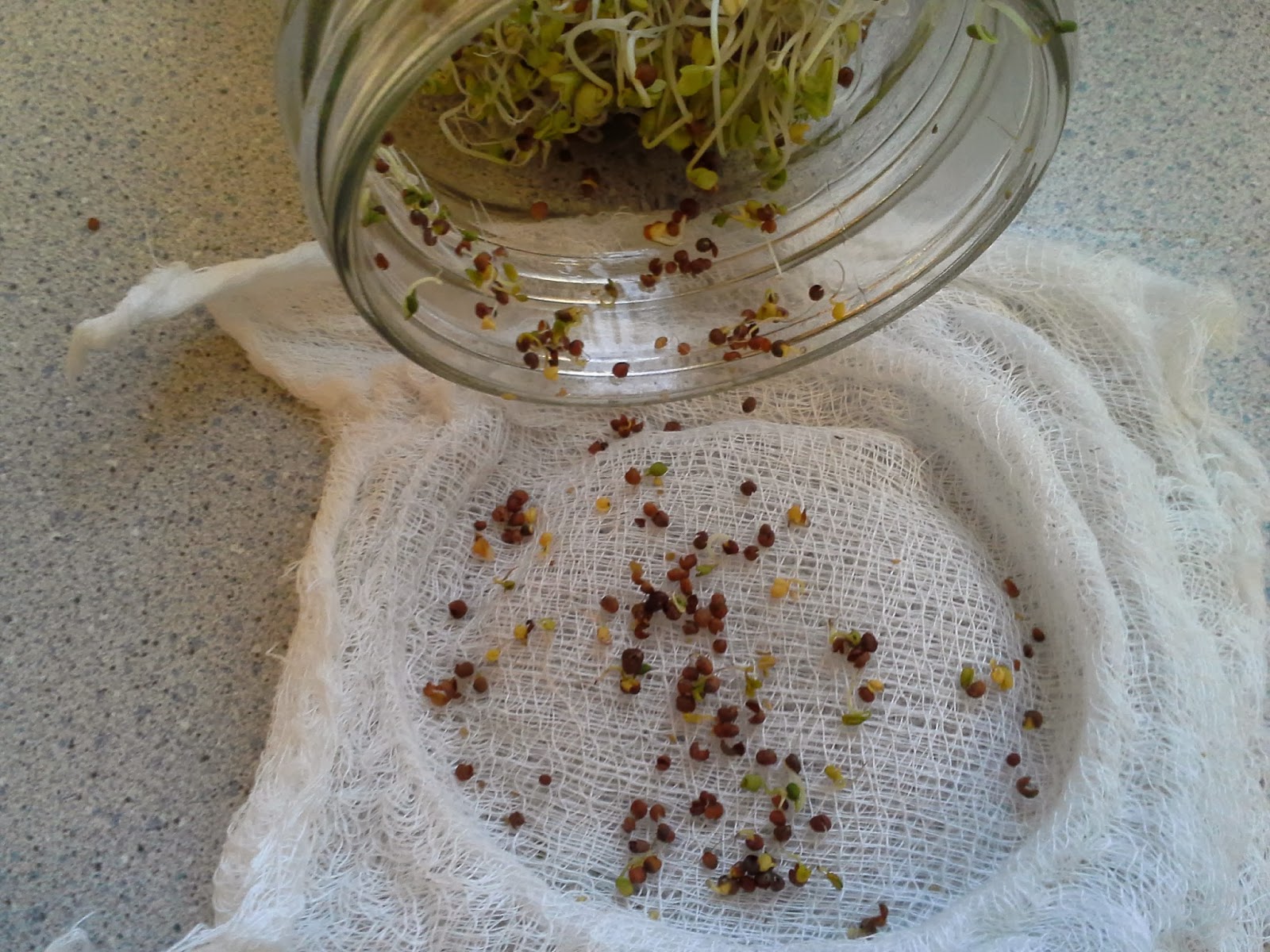This information was collected from various websites about 4 or 5 years ago.
Alfalfa
Contains significant
dietary sources of phytoestrogens connected with prevention of menopausal
symptoms, osteoporosis, cancer and heart disease. One of the most popular sprouts, is a good source of vitamins A,
B, C, D, E, F, and K and is rich in many minerals, as well as many enzymes
needed for digestion.
Broccoli
Has a mildly
peppery flavor. They are also high in
the cancer fighting compound, sulforaphane.
Buckwheat
High in vitamins A, B, C and D.
Buckwheat
High in vitamins A, B, C and D.
Lentil
Rich in protein, vitamin C and the B vitamins. They have a mild ground
pepper flavor. They are 26% protein. They can be cooked or eaten raw.
Radish
Has 29 times more
vitamin C than milk and 4 times the vitamin A.
There spicy sprouts have 10 times more calcium than a potato and contain
more vitamin C than pineapple.
Red Clover
Contains the most
significant dietary sources of isoflavones of any sprout variety. Isoflavones have been proven to have powerful
anti-cancer properties.
Sunflower
A rich source of
lecithin and vitamins B, D and E. It is known for
its crispness and nutty flavor. It
breaks down fatty acids into an easily digestible, water soluble form
Mustard
Characterized by
their tiny, spicy leaves. They are
delicate, but very spicy.
Onion
Distinct onion
flavor without the tears or waste. 26%
protein and a good source of vitamins A, C, and D.
Mung Bean
These sprouts should be sprouted under pressure to produce long
and juicy sprouts. Mung bean sprouts are an excellent source of protein,
vitamin C, A and E, along with many minerals..
Soybean
An extremely rich source of protein and vitamins A, B, C and E. Soybeans
are rich in minerals and lecithin. They can be sprouted under pressure
like mung beans.
Wheat
High in Vitamins B, C, and E and has three times the vitamin E of dry wheat. Wheat also has many minerals.
Do Not eat tomato or potato sprouts as they are poisonous.
Ways to use sprouts:Wheat
High in Vitamins B, C, and E and has three times the vitamin E of dry wheat. Wheat also has many minerals.
Do Not eat tomato or potato sprouts as they are poisonous.
Add to tossed salads
Use in coleslaw (cabbage, clover,
radish)
Try in potato salad (mung bean,
lentil)
Try in wraps and roll-ups
(alfalfa, sunflower, radish)
Stir-fry with other vegetables
(alfalfa, clover, radish, mung bean, lentil)
Blend into fruit shakes or juices
(cabbage, mung bean, lentil)
Blend with vegetable juices
(cabbage, mung bean, lentil)
Replace celery in sandwich spreads
(lentil, radish)
Mix with soft cheeses for a dip
(mung bean, radish)
Grind up and use in sandwich
spreads (lentil, radish)
Top grilled cheese sandwiches
after grilling (alfalfa, clover)
Stir into soups or stews when
serving (mung bean, lentil)
Mix into pancake or waffle batter
(buckwheat)
Eat them fresh and uncooked in a
sprout salad (salad mixes)
Top omelet or scrambled eggs
(alfalfa, clover, radish)
Combine in rice dishes (fenugreek,
lentil, mung bean)
Add to sushi (radish, sunflower)
Saute with onions (mung bean,
clover, radish)
Puree with peas or beans (mung
bean, lentil)
Add to baked beans (lentil)
Steam and serve with butter (mung
bean, lentil)
Use in sandwiches instead of
lettuce (alfalfa, clover, radish)
Add to homemade bread (wheat)
Add any kind to any green salad
Replace lettuce in a sandwich
Add a few alfalfa sprouts to a cheese sandwich (not grilled cheese)
Tacos made with whole wheat tortillas and alfalfa sprouts instead of lettuce






















